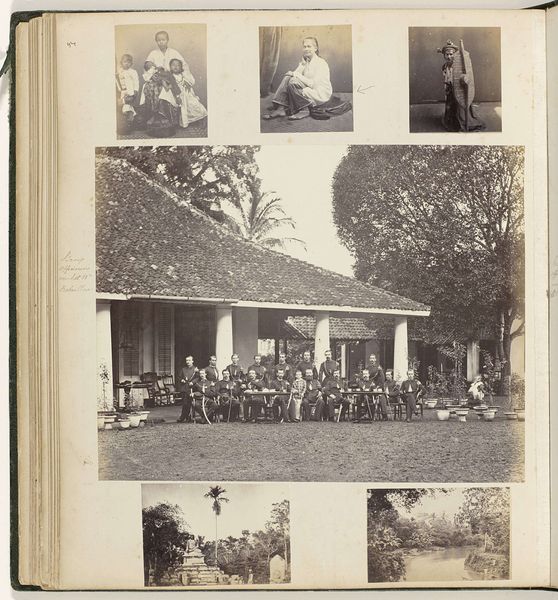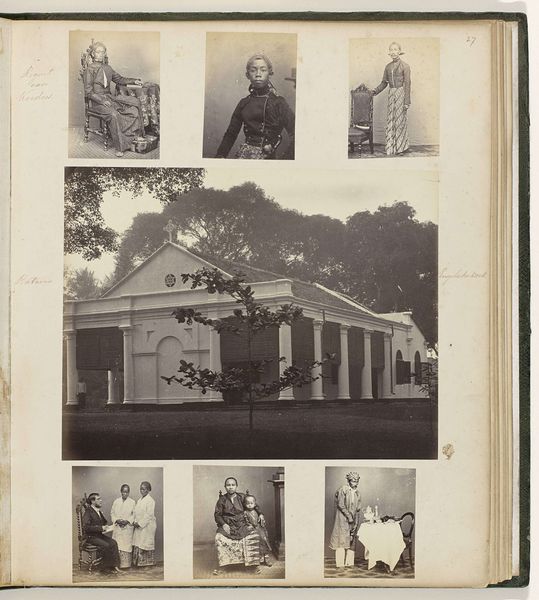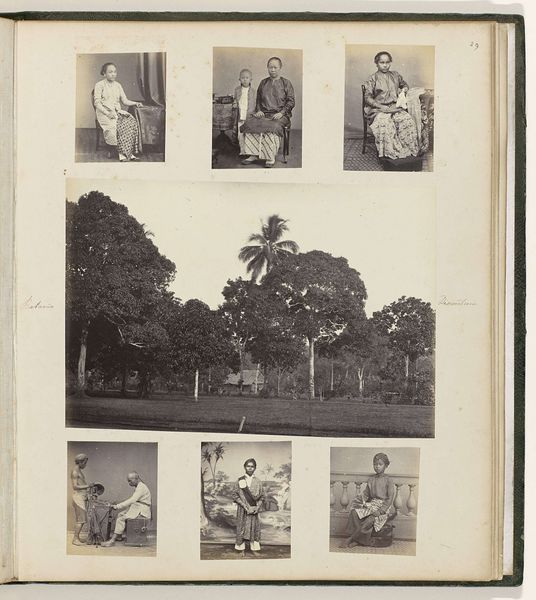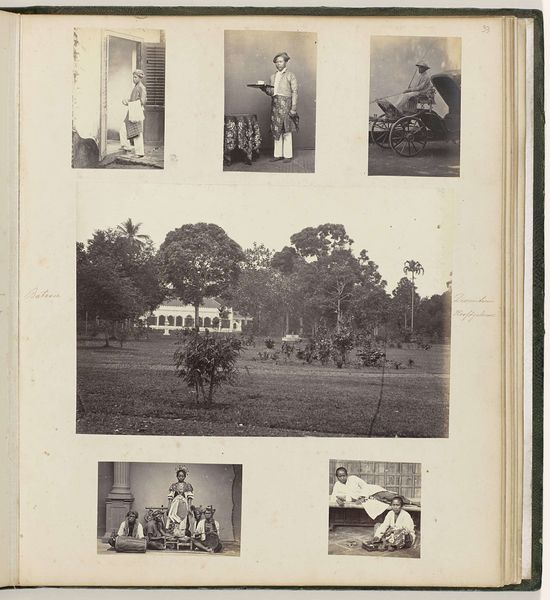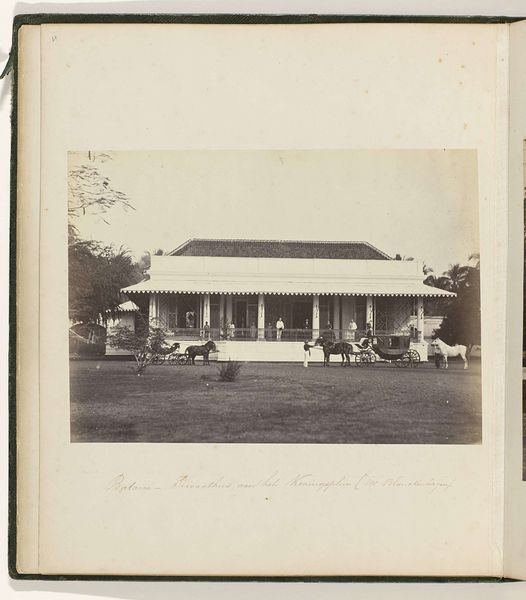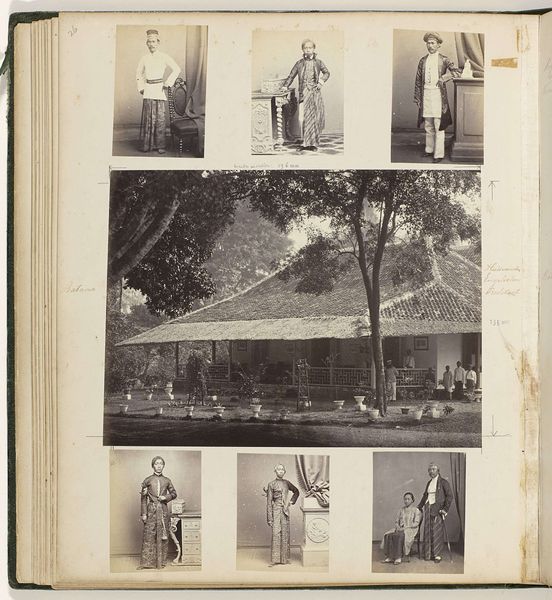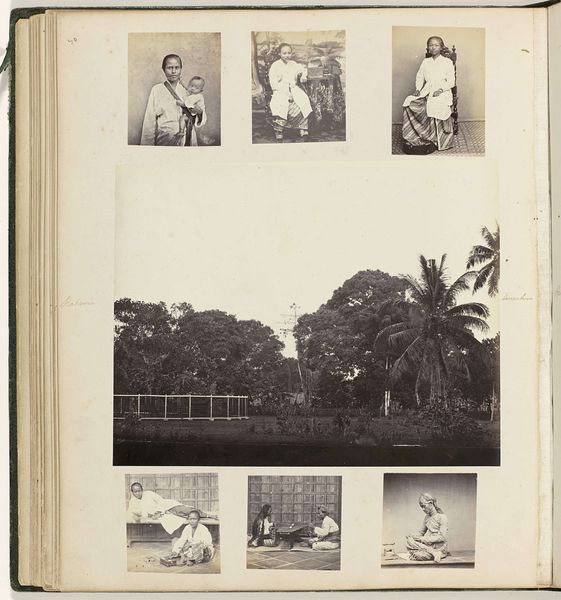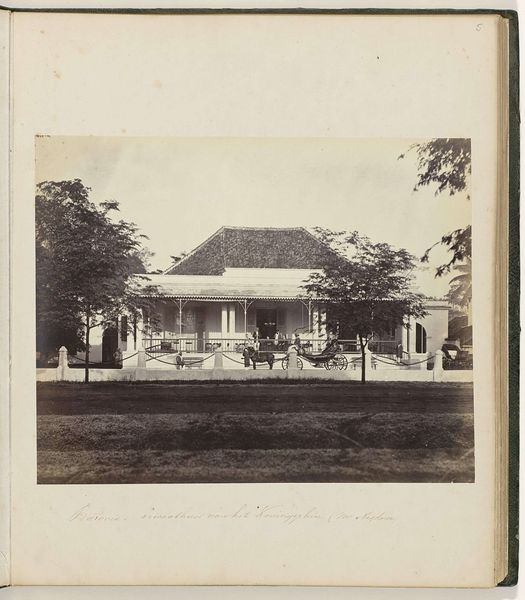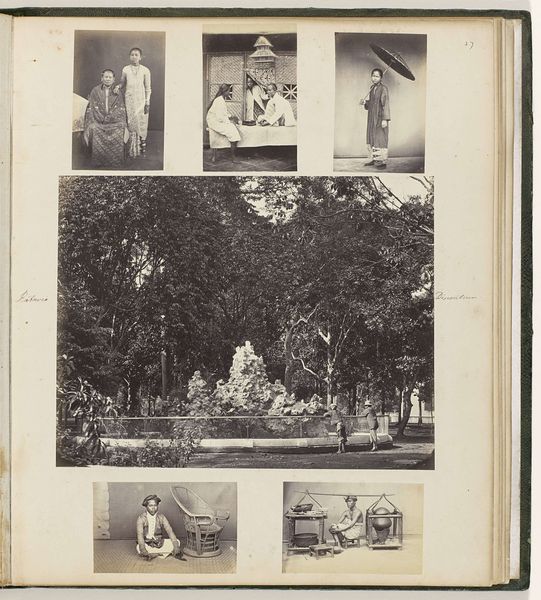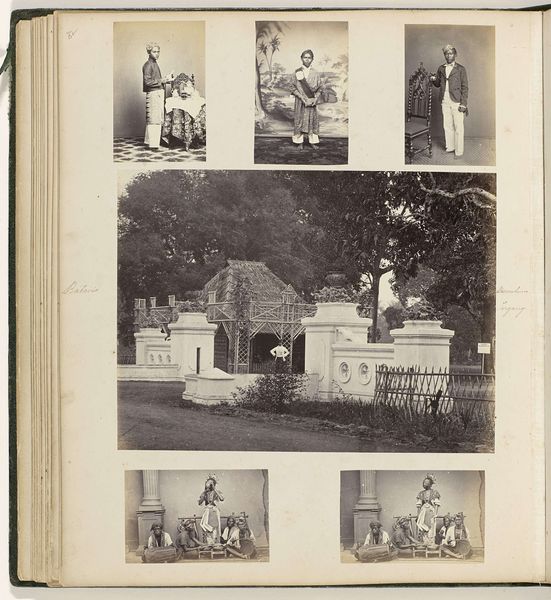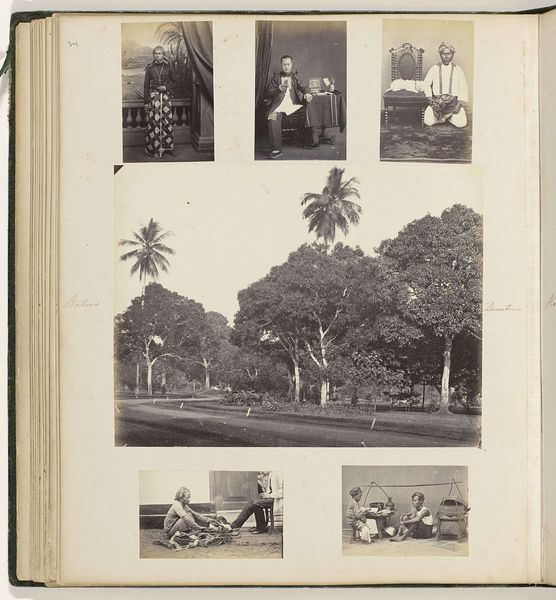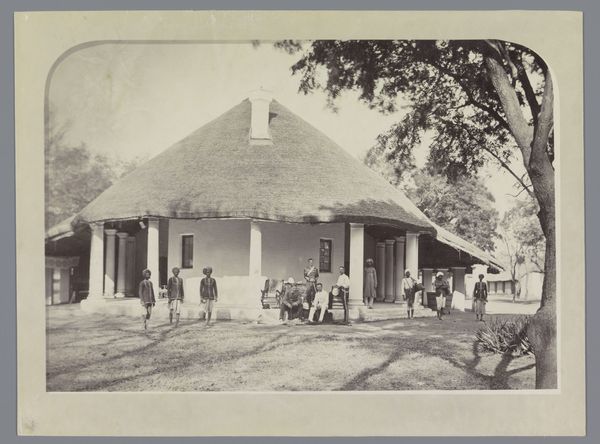
photography, albumen-print
#
portrait
#
asian-art
#
landscape
#
photography
#
albumen-print
Dimensions: height 365 mm, width 305 mm, height 187 mm, width 245 mm
Copyright: Rijks Museum: Open Domain
Curator: This albumen print, "Dierentuin en portretten," from Woodbury & Page, dating from 1864 to 1866, offers us a window into colonial Java. What strikes you immediately? Editor: I'm intrigued by how it juxtaposes carefully posed portraits with these serene, almost idyllic landscape scenes. The portraits feel very staged and formal, while the garden views are a little softer, with the exotic pavilions. It's a curated glimpse, clearly. Curator: Exactly. These kinds of composite photographs often served specific colonial narratives. The portraits present carefully constructed images of status and identity, while the landscapes evoke a sense of control and mastery over the environment. Consider the individuals portrayed. Their adornments, postures… all speak to their position within the societal hierarchy. How are those communicated? Editor: Well, the figures are certainly styled and framed, but also seem rather rigid. Take the figure wearing many necklaces --her adornment feels simultaneously rich and burdening, but its value and presence certainly communicate an expectation and established presence. The gazebos, framed with the vegetation feel like they speak to a controlled tropical space where you see elements that refer to cultivation or recreation... It is striking to realize these elements exist within the same constructed page. Curator: And that's the crux of it. The photographic medium itself, combined with the deliberate choices in composition, served as a tool for shaping perceptions. Colonial photography was far from objective; it actively participated in the construction of power dynamics and racial identities. Who was meant to receive this and to consume it? What could they think looking at this page of scenes? Editor: Thinking about visual language, I am also wondering about the symbolism embedded within these architectural details. Do those garden structures recall earlier design principles that suggest something of the identity these early colonists were cultivating, or hoping to reinforce? A familiar or 'tame' architecture, perhaps. Curator: It's possible. Understanding the layers of context is critical. Without that framework, the photograph can be easily misconstrued as a benign record. We need to acknowledge its potential to both document and perpetuate colonial ideologies. It seems simple to receive images without a filter but a deep analysis helps us understand them now. Editor: I agree. Exploring images like these provides necessary, but sometimes uncomfortable, insights.
Comments
No comments
Be the first to comment and join the conversation on the ultimate creative platform.
